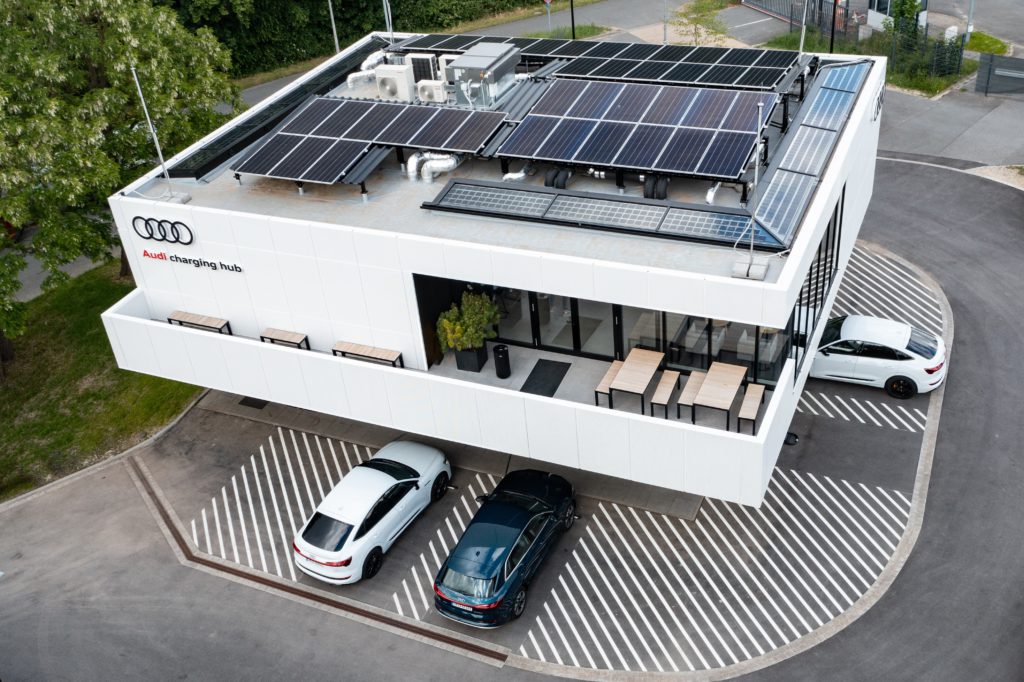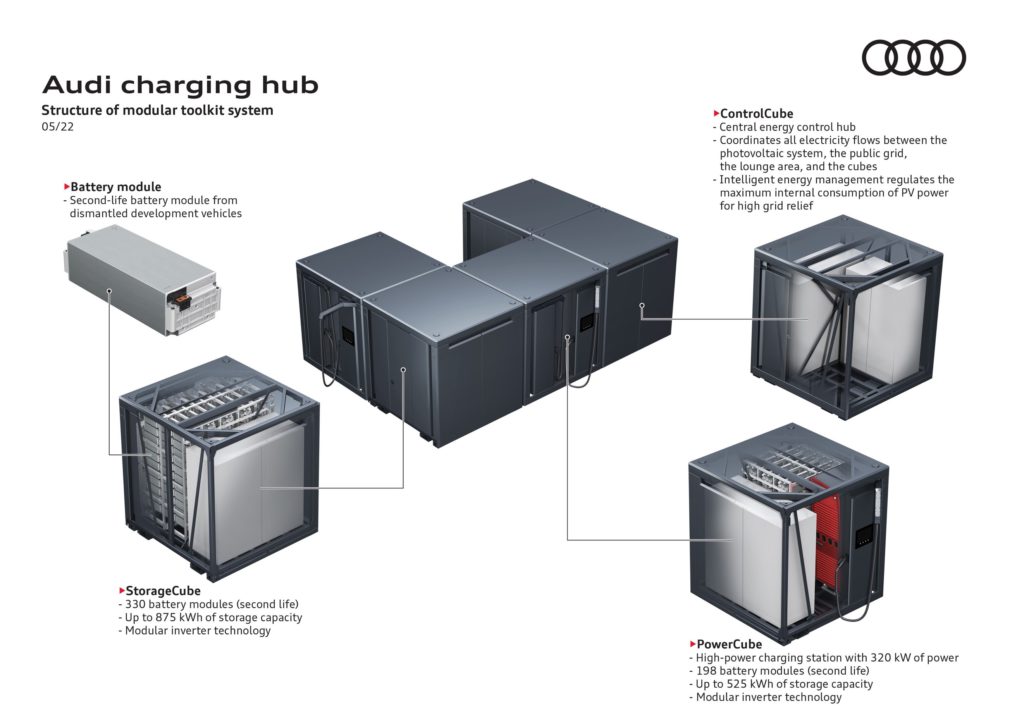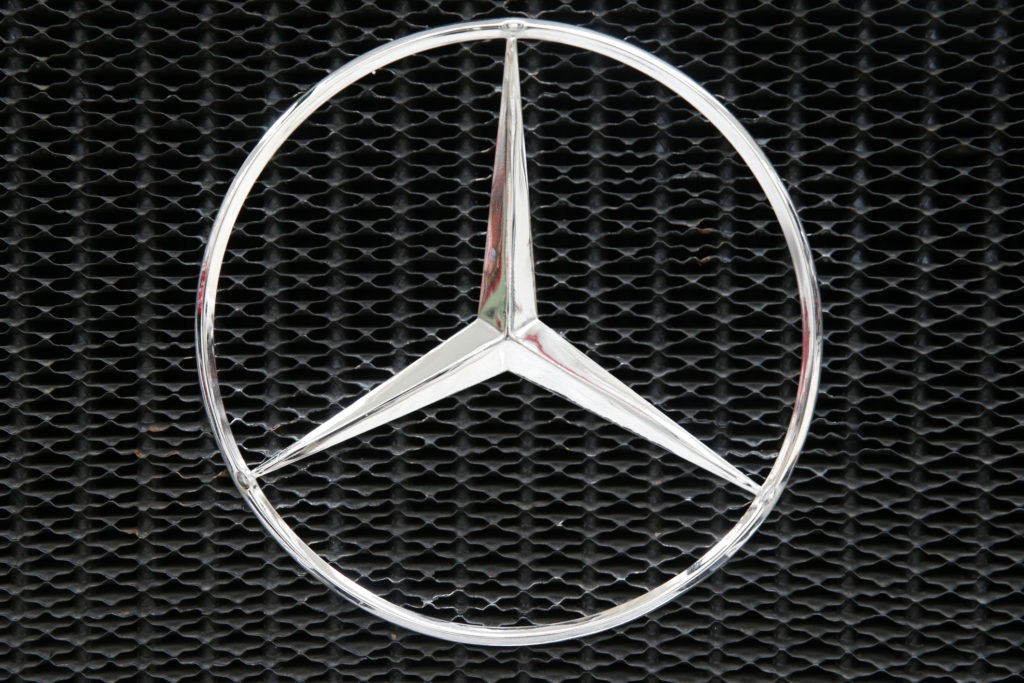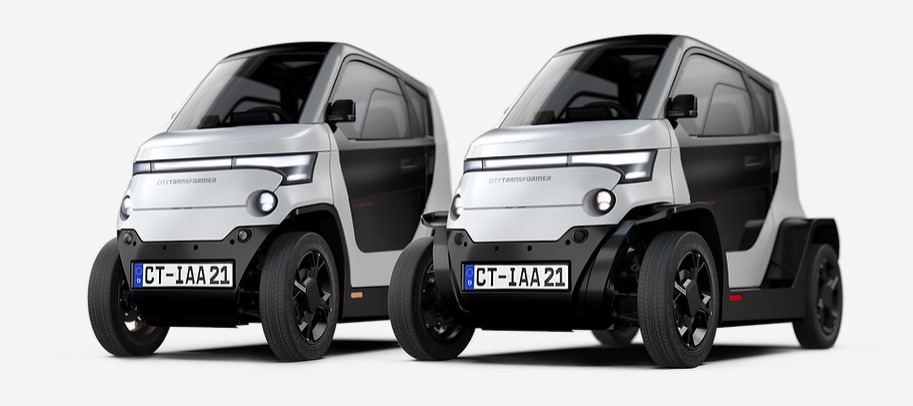Audi rolls out more charging hubs following pilot success
13 June 2022

Following positive pilot results, Audi is charging forward with its German electric-vehicle (EV) infrastructure rollout. Operating in Nuremberg, the current high-powered test site is an effective proof-of-concept for more locations to open in the second half of the year.
As the number of battery-electric vehicles (BEVs) on the road increases, the need for charging infrastructure climbs correspondingly. Where once there was a sea of fuel pumps, the new automotive energy landscape will be dominated by cables and plugs.
Companies capable of carving themselves a space within this new world will have a closer relationship with drivers as service providers. But not all infrastructure can exist in driveways and garages. That is why Audi is tapping into a growing market of EV drivers without access to a private plug-in point.
Fully-charged concept

Between January and the end of April 2022, the Audi Charging Hub in Nuremberg has received a positive reception. It clocked in 3,100 charges across an average of 35 customers in a day. But more impressively, 60% of these plug-in sessions came from returning electric-vehicle drivers, demonstrating a dedicated customer base.
With six reservable high-powered charging points, the pilot site can manage 24 charges at roughly 800kWh a day. An app allows users to book a space in the 200-square-metre lounge, which features catering, a micro-mobility battery-exchange point, and a grocery-delivery service.
‘The numbers and positive customer feedback demonstrate that our concept of offering flexible, premium quick-charging infrastructure in urban spaces was spot on,’ said Audi charging hub project manager, Ralph Hollmig.
Battery-charging blueprint

Audi’s Charging Hubs use cube-shaped power containers, with recycled lithium-ion batteries taken from dismantled test vehicles. These cubes can be assembled and disassembled quickly. ‘The system’s modular design lets us react flexibly to on-site conditions,’ explained Hollmig.
The 2.45MWh of interim storage means the Nuremburg site only needs a 200kW connection to a low-voltage network to continuously fill its modules. The modular sites can supply up to 320kW of power from sustainable sources, including solar panels fitted to the roof.
Based on these blueprints, Audi will open another version of its hub with four roofed charging points and two power cubes in Zurich, starting in the second half of 2022. The tighter design is more tailored to Zurich’s urban banking and insurance district. The construction will also mean short preparation times for planning and implementation, with no need for civil-engineering work.

Other sites will also begin springing up across Germany in the second half of this year. Berlin and Salzburg will also host compact designs. Then, three more locations will be added in other urban spaces starting in 2023, with more due by mid-2024. The design and deployment of these hubs demonstrate Audi’s determination to deliver EV infrastructure in as many urban settings as possible, providing what is becoming an essential service.
Faster charging, lower RVs
However, there is an issue lurking beneath the surface of every new rapid-charging system, regardless of its location. While high-powered plugs provide accelerated charging times, they may also pose a risk to electric-vehicle residual values (RVs).
Since their introduction, and particularly with the scheduled conclusion of new petrol and diesel sales, a constant complaint of electric vehicles has been charging times. Drivers are used to rapidly filling up on fossil fuels and expect the same of a plug-in car.
So, carmakers and service providers continue to engineer increasingly powerful infrastructure, shrinking charging times to a matter of minutes. But EV owners may end up paying for these rapid results with more than just money.
How batteries are treated, including charging, affects performance and RVs, according to Autovista Group and predictive-analysis software provider TWAICE. For example, at the three-year mark after 45,000km, a poorly-treated battery will perform worse on the expected range, by roughly 5%, the companies found in the research published in 2020: The Power of signalling.

‘From a used-BEV remarketing perspective, it is important to treat the battery well, for example by managing the capacity at around the 30% to 80% level and slow charge significantly more than fast charge,’ explained Dr Christof Engelskirchen, chief economist at Autovista Group. ‘Even more important for optimised remarketing will be to provide an audit trail of how well the battery has been treated until resale and to supply an objective battery health certificate when remarketing the electric vehicle.’
Furthermore, Autovista Group and its German subsidiary Schwacke explored the potential of battery health certificates for BEV remarketing. The status of these power-storage units represents a value of up to €450 per car in the compact-vehicle segment. Multiplied by a potential market of five million BEVs come 2030; that would represent roughly €2.3 billion worth of higher remarketing results.
So, while users may find rapid-charging points incredibly useful, they would do well to remember the potential impact. By opting for longer plug-in times, they could support the vehicle residual value significantly when it comes to remarketing.



